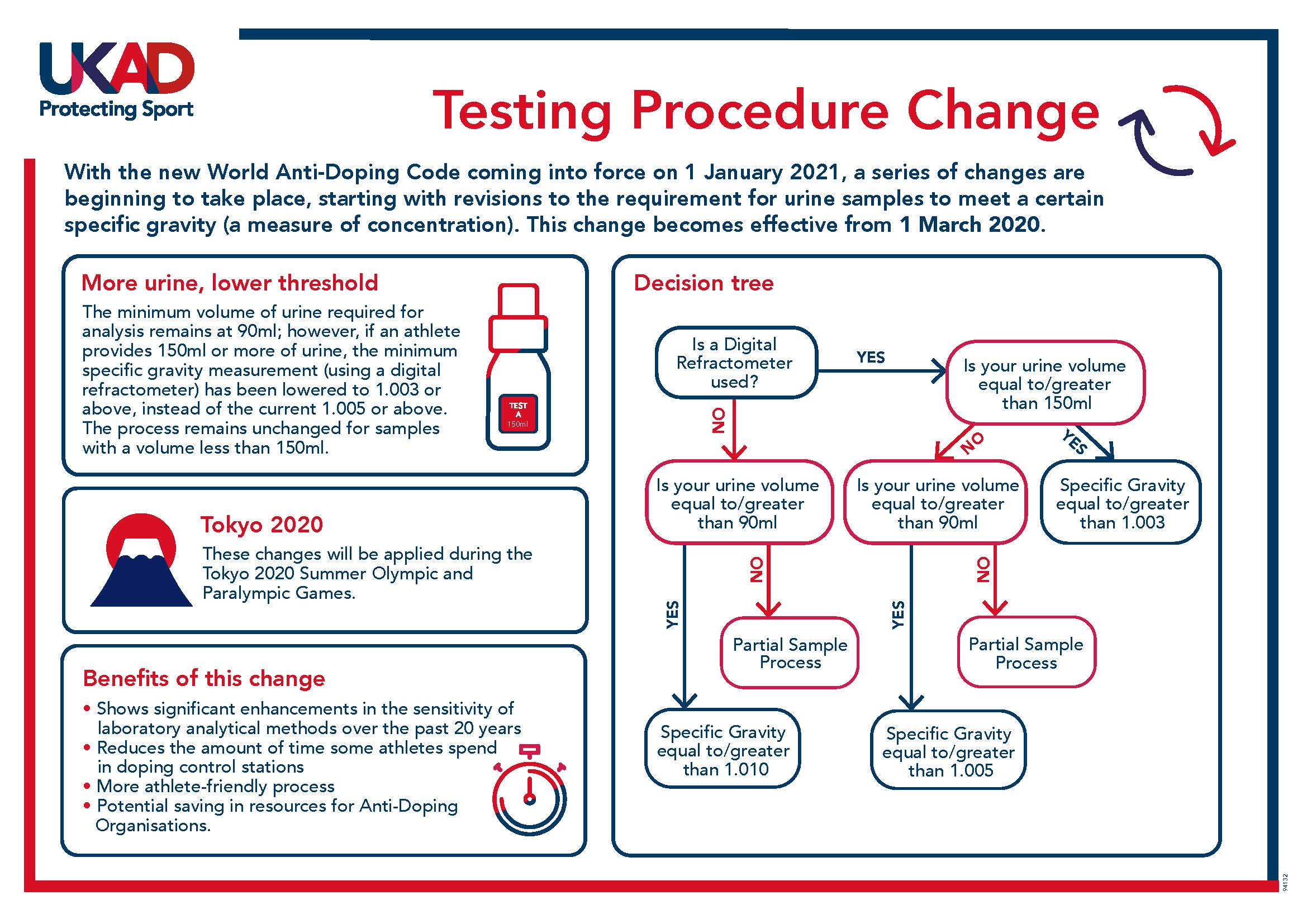Urine sample concentration change to come into effect ahead of the Tokyo Games: What this means for athletes
With the new World Anti-Doping Code coming into force on 1 January 2021, a series of changes are beginning to take place, starting with a revision to the requirement for urine samples to meet a certain specific gravity (a measure of concentration).
The World Anti-Doping Agency (WADA) recently published a revised International Standard for Testing and Investigations (ISTI), approved by WADA’s Executive Committee (ExCo). One of the objectives of this document is to set out the processes that must be followed during the collection of a sample from an athlete. The change made to the specific gravity requirement of a sample will come into action when the latest version of the ISTI becomes effective from 1 March 2020.
When an athlete provides a urine sample to a Doping Control Officer (DCO), the minimum volume of urine required for analysis is 90ml. To put this into perspective, that’s the same volume as approximately three espresso shots.
The other requirement for the sample relates to the concentration of the urine. This is measured using a piece of equipment the DCO carries called a digital refractometer. If the urine is too dilute the sample can be rejected, and the athlete will have to provide another sample - this can take a long time!
Under the revision within the 2020 ISTI, if an athlete provides 150ml or more of urine, the minimum specific gravity measurement will be lowered to 1.003 from the current 1.005 or above.
If an athlete provides a sample with a volume greater than 90ml but less than 150ml, the specific gravity measurement requirement remains at 1.005.
UKAD’s Head of Testing, Emma Price, said: “This change to the testing procedure has been launched in advance of the new Code being implemented on 1 January 2021, so that it’s applied at the Tokyo 2020 Summer Olympic and Paralympic Games. This testing procedure change will also operate in the sample collection process in non-Olympic and Paralympic sports.
“The change to the specific gravity threshold recognises significant improvements in the sensitivity of laboratory analytical methods made over the past 20 years. The revision will also reduce the amount of time some athletes spend in doping control stations, there will be less equipment used and therefore less analysis costs, it makes the process more athlete friendly, and it will save resources for Anti-Doping Organisations, which can and will be better spent elsewhere.”
Digest information better visually? Check out the below infographic for more information, and if you have any questions on this or other Code related changes, please email 2021code@ukad.org.uk.

